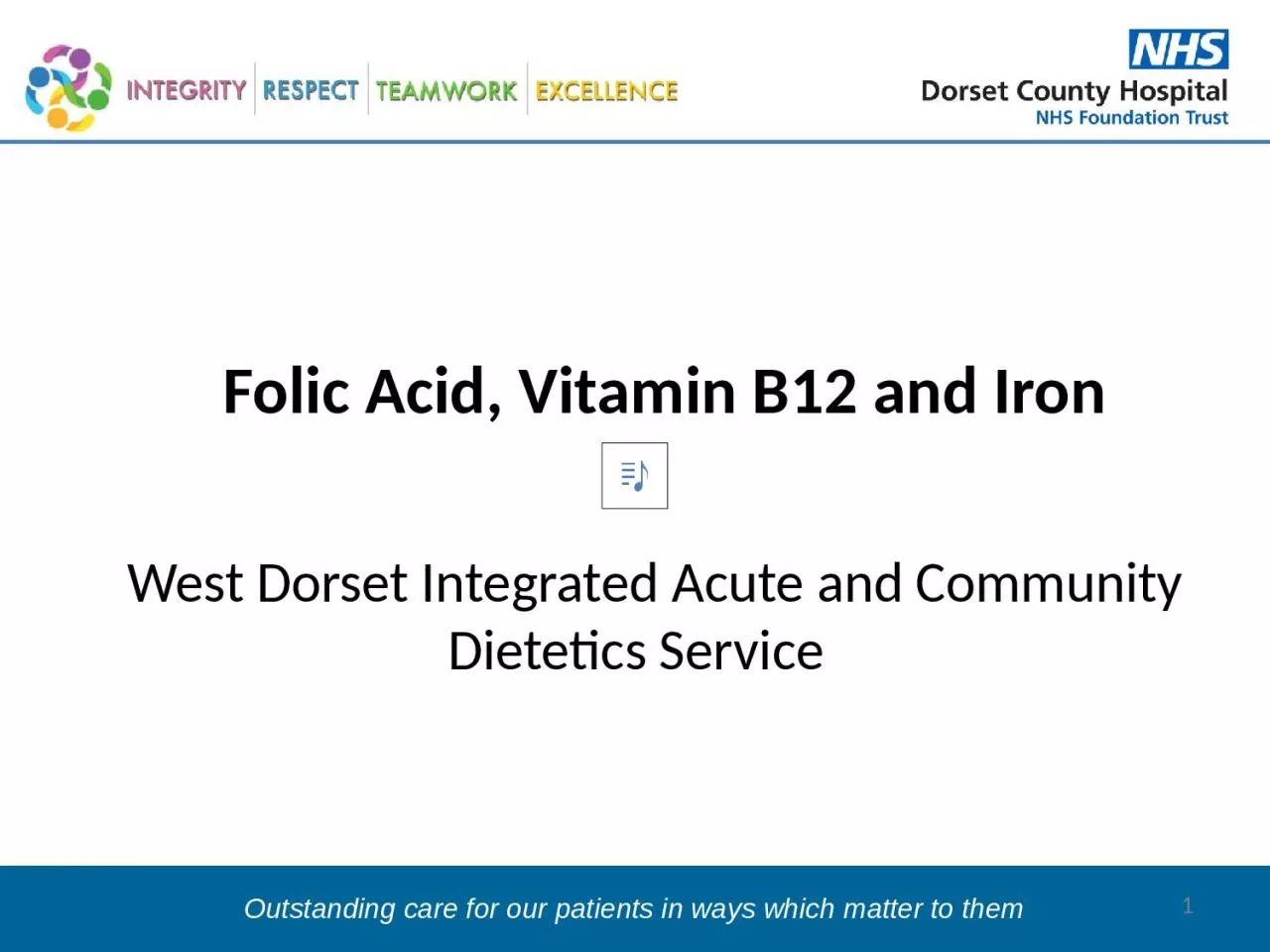

West Dorset Integrated Acute and Community Dietetics Service Folic Acid With vitamin B12 needed to form red blood cells Sources of Folic Acid Spinach kale Brussels sprouts cabbage broccoli ID: 1030514
Download Presentation The PPT/PDF document "1 Folic Acid, Vitamin B12 and Iron" is the property of its rightful owner. Permission is granted to download and print the materials on this web site for personal, non-commercial use only, and to display it on your personal computer provided you do not modify the materials and that you retain all copyright notices contained in the materials. By downloading content from our website, you accept the terms of this agreement.
1. 1Folic Acid, Vitamin B12 and IronWest Dorset Integrated Acute and Community Dietetics Service
2. Folic AcidWith vitamin B12, needed to form red blood cellsSources of Folic AcidSpinach, kale, Brussels sprouts, cabbage, broccoliBeans and legumes (e.g. peas, blackeye beans)Yeast and beef extracts (remember to pick gluten-free versions)Oranges and orange juiceWhole grain foods (choose gluten-free versions)Poultry, pork, shellfish and liverFortified foods (e.g. some brands of breakfast cereals – check the label)2
3. Vitamin B12Used to reproduce DNA, make healthy blood cells and is essential for nerves to work properly.Sources of B12Meat products (especially liver)Fish (especially shellfish and oily fish)Dairy productsFortified foods, which can include breakfast cereals, yeast extracts, soya yoghurts and non-dairy milksIf your diet doesn’t include animal products, aim for two fortified foods per day (aiming for 3mcg) or take a supplement (10mcg/day or 2000mcg/week)3
4. Folic acid and B12 DeficienciesSymptoms of deficiency: fatigue, pallor and breathlessnessTreating deficiency: B12 injectionFolic Acid oral supplements 4
5. IronMineral with many different roles, including helping oxygen transport around the body and maintaining a healthy immune systemThere are two types of iron in the diet:5Haem iron (animal-based sources)most easily absorbedNon-Haem iron (plant-based)less easily absorbedRed meat (beef, lamb, pork)FishPoultryEgg yolkGreen leafy vegetables Pulses and legumes (e.g. beans, peas, lentils)TofuNuts and seedsDried fruit
6. Increasing Iron AbsorptionTips to optimise iron intake and absorption:Follow a strict gluten-free diet to optimise your gut’s ability to absorb the iron in your dietInclude a source of vitamin C, such as fruit or vegetables, alongside iron-rich foods, to boost absorptionHave a source of Haem iron alongside non-Haem foods, e.g. red meat alongside vegetables, to boost the absorption of non-haem foods Some foods can inhibit iron absorption, including tea, coffee and chocolate, so try to avoid having these with mealsThere are also some foods fortified with iron, such as cereals, that can be included in your diet – look out for this on product packaging Deficiency: Symptoms include tiredness, pale skin, shortness of breathYou may be prescribed supplements if you are found to be iron deficient6